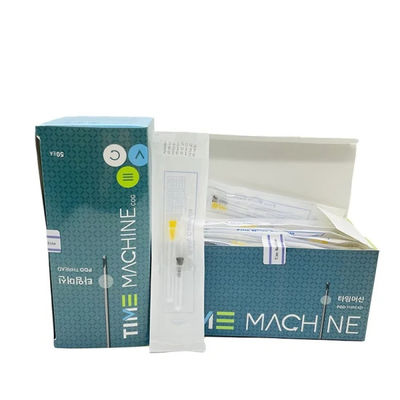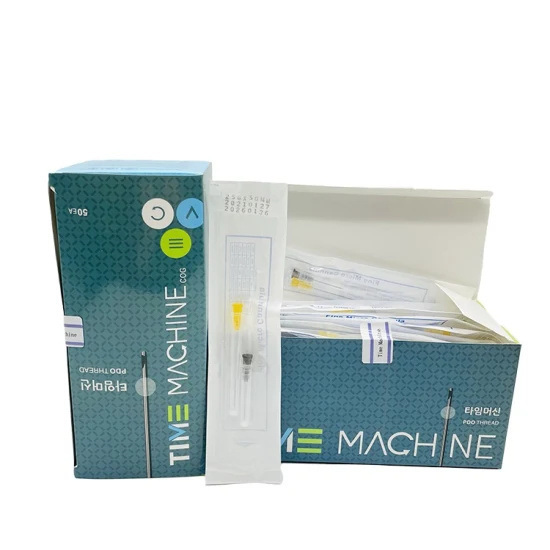23-27g 38-70mm Blunt Tip for Fillers Micro Cannula
Datos del producto:
| Nombre de la marca: | Micro Cannula Needle |
| Documento: | Manual del producto PDF |
Pago y Envío Términos:
| Cantidad de orden mínima: | 10 |
|---|---|
| Precio: | 0.8 dollars |
| Detalles de empaquetado: | caja |
| Tiempo de entrega: | 1-3 días |
| Condiciones de pago: | LC, D/A, D/P, T/T, Western Union, MoneyGram |
| Capacidad de la fuente: | 5000 pcs/mes |
|
Información detallada |
|||
| WhatsApp: | +86-18132165209 (en inglés) | ||
|---|---|---|---|
| Resaltar: | 23-27g blunt tip micro cannula,38-70mm filler micro cannula,dermal filler blunt tip needle |
||
Descripción de producto
Understanding Cannulas in Filler Procedures
Definition of Cannulas
Cannulas are flexible, blunt-tip tools used in filler procedures. They differ from traditional needles because they have a rounded end, similar to those used for dermal filler. This design reduces the risk of damaging blood vessels and nerves during the dermal injection process. Cannulas allow for smoother and more controlled delivery of fillers.
Entry Point Creation
Before using a cannula, a sharp needle is employed to create an entry point. This step is crucial for the dermal filler injection procedure. The sharp needle punctures the skin, making it easier to insert the cannula. Once the entry point is established, the cannula slides into place.
Delivery of Fillers
Cannulas play a vital role in delivering fillers into desired areas. Their flexibility allows them to navigate through tissues without causing significant trauma. This feature enhances patient comfort during the dermal filler treatment procedure.
The blunt-tip design minimizes bruising and swelling compared to sharp needles. As a result, patients often experience less downtime after their facial filler treatment session.
Advantages of Using Cannulas
- Reduced Pain: Cannulas often cause less pain than needles.
- Lower Bruising Risk: They minimize bruising due to their design.
- Wider Area Coverage: Cannulas can treat larger areas with fewer entry points.
These benefits make cannulas popular among practitioners and patients alike.
Considerations for Practitioners
Practitioners must be skilled in using cannulas for effective results. They should understand facial anatomy well to avoid complications during dermal filler sessions. Proper training ensures safe and effective use of these tools.
In summary, understanding cannulas is essential for successful filler procedures. Their unique design offers numerous advantages over traditional needles, making them a preferred choice in cosmetic treatments.
Cannula vs Needle for Fillers
Blunt Tip Cannulas
Cannulas have a blunt tip, which makes them different from traditional needles. This design helps reduce the risk of bruising and damage to blood vessels. The blunt end pushes tissue aside rather than cutting through it. This technique allows for safer filler injections.
Cannulas can cover larger areas with fewer entry points. Fewer punctures mean less pain and discomfort for patients. Many practitioners prefer using cannulas for this reason. They can also help achieve a more even distribution of the filler.
Sharp Needles
Needles have a sharp point that can create an initial prick sensation. Some patients prefer this method because they feel it gives them more immediate results. The sharpness allows for precise placement of dermal fillers.
However, needles can cause more discomfort during the procedure. They may lead to increased swelling or bruising afterward. Patients often report feeling the quick sting of the needle but may not enjoy the aftereffects.
Insertion Techniques
The insertion techniques vary significantly between cannulas and needles. Cannulas require a small entry point, usually made with a needle first. After creating the opening, the cannula is gently inserted into the skin.
Needles are inserted directly into the skin without prior preparation. This method can be quicker but may result in more trauma to the tissue. Practitioners must choose their technique based on patient needs and desired outcomes.
Patient Experiences
Patient experiences differ widely based on whether they receive injections with cannulas or needles. Many patients report less pain with cannulas due to their design and technique. The process tends to be smoother, leading to a more comfortable experience overall.
On the other hand, some patients prefer needles because they are familiar with them. They might feel more confident in their effectiveness despite potential discomfort. Understanding these preferences helps practitioners provide better care tailored to individual needs.





